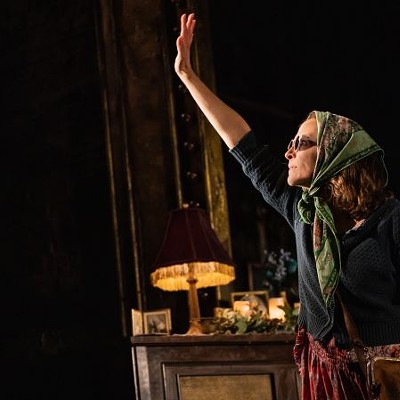Film lovers all over Houston will be gathering to take in a barrage of independent films and filmmakers at the city's Cinema Arts Festival this week and weekend. Art Attack viewed one of the festival's offerings, a profound and beautifully shot documentary entitled Unfinished Spaces.
The film, co-directed by first-time filmmakers and NYU pals Alysa Nahmias and Benjamin Murray, weaves together architecture, visual arts, personal profile and historical fact with a syncopated Cuban musical thread. The hour-and-20-minute foreign language documentary follows the trials and tribulations of architects Ricardo Porro, Vittorio Garatti and Roberto Gottardi, who designed Cuba's National Art Schools during the time of the Cuban Revolution. The building of the schools, which lasted from 1961 to 1965, paralleled the Revolution, from its glorious beginning to its gradual demise.
Nahmias, who as an architecture student got the chance to meet Gottardi and visit the abandoned buildings during a trip to Cuba, was the initiator of the project. She wanted to know why no one had done a story on the schools.
"Why don't you do it?" she was told by Gottardi.
When Nahmias returned to New York, she and Murray, a film student, began in 2001 to try to document the creation and deterioration of the schools, which were never completed (hence the title). Fast-forward ten years to the documentary's debut at the 2011 Los Angeles Film Festival in June. Since then, the Academy Award-eligible piece has traveled all over the world, before finally making its way to Houston.
"We're thrilled to be included in the Houston Cinema Arts Festival," said Murray.
Set to cadenced horns and cha-cha-cha drums, the film begins with a historical retelling of the National Art Schools' origins as an offshoot of the Cuban Revolution. Fidel Castro dreamed of creating the best art schools in the world. He called on architect Selma Diaz to direct a five-pronged school of arts, consisting of the School of Modern Dance, the School of Plastic Arts, the School of Ballet, the School of Music and the Dramatic Arts School. After accepting the assignment, Diaz asked another architect, Porro, to lead the charge in designing the schools, and after inviting Italian architects Garatti and Gottardi to join the project, the three underwent a grueling two-month brainstorming and design session to come up with blueprints.
Each architect was given his own school or schools to build.
Gottardi created a medieval-like space for the Dramatic Arts School; a series of passageways made it "mysterious and tortuous."
Garatti was in charge of the Schools of Ballet and Music, and created a womb-like open design with no windows or doors, representing freedom as a "statement of the Revolution."
And Porro, perhaps the most flamboyant of the trio, created an ode to female fertility in the Schools of Modern Dance and Plastic Arts. The tops of his buildings were designed to resemble the breasts of a woman, and an oversized papaya fruit placed in the center of the School of Plastic Arts' piazza was meant to represent, um, something else. Each building was constructed with brick, clay and terra cotta, the only materials available to the embargoed country.
Unfortunately, as the revolution changed its focus, with events like the Bay of Pigs, the Cuban Missile Crisis and the eventual collapse of the Soviet Union, the schools followed suit, falling into disrepair after Castro's anti-gay and anti-arts regime ordered a stop to their completion in 1965.
This is where the music grows somber and the film centers its lens on the architects, following each on their separate paths as they were ousted from Cuba's architectural circle (Porro fled to Paris, Garatti was accused of espionage and forced out of Cuba, Gottardi stayed as a worker for the Ministry of Construction), then welcomed back as part of a pardon and restoration promise by Castro himself.
"I think it's a bigger story than just Cuba or architecture," Murray said. "I hope people are able to come away with an understanding, not just of Cuba but also of the role of these artists."
Unfinished Spaces will be showing on Sunday, November 13, at the Talento Bilingue de Houston at 3 p.m. For more information and ticket prices, visit cinemaartssociety.org.





